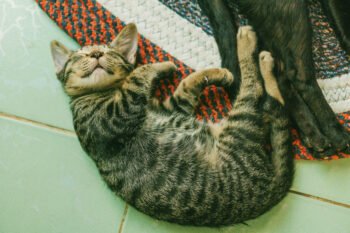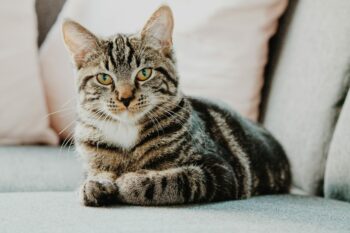At age 17, Candy was diagnosed with kidney failure. Without ongoing, regular fluids, her kidneys would soon shut down. Since it was not feasible to bring her to the veterinary hospital every day, I would have to administer these fluids from home. Today, thanks to subcutaneous fluids and a supplemental medication, Candy is doing well and her kidney levels are almost back to normal.
Many cats, especially as they get older, must receive medications at home, whether because they are recovering from an illness or surgery, or they have a chronic condition. Let’s take a look at some of the long-term medications and therapies your veterinarian might prescribe, and tips on administering them properly.
- Subcutaneous Fluids and Injections
Subcutaneous fluids are chemical fluids that come in a sterile IV bag. They are administered by needle under the skin. Regular administration of these specialized fluids may be prescribed to help cats who have been diagnosed with kidney problems or are dehydrated from sickness or severe diarrhea. Occasionally, regular injections are prescribed, most often for cats diagnosed with diabetes.
Your veterinarian will show you the right way to administer fluids and injections, but here are a few tips to remember: The skin on the back of the neck, between the shoulder blades, is the best area to place the needle, because the skin is loosest there and you’re less likely to hit a muscle with the needle. When lifting the skin, be sure not to poke the needle straight through, particularly with injections. You don’t want to waste precious insulin.
With fluids, if you open the line and fluid leaks down the cat’s side, you have poked the needle through. Simply pull back a bit until the fluid is no longer leaking. Be sure to get a good drip going, even if you have to move the line around a bit. Occasionally the needle might be resting against tissue, which can cause the flow of the fluids to slow. Sometimes just pulling the needle out a little bit helps. Another tip that works with many cats is to find some good counter space and administer the fluids at feeding time. Many cats, distracted by the food, will ignore the needle.
If your cat will be on fluids permanently, see if you can use the smaller size needles (0.9 mm X 25 mm). It might take a little longer to administer all the fluids, but a cat who is constantly stuck with the larger needles might become sore.
- Tablets
A pill gun is the easiest way to give your cat a tablet. Your vet can show you how to use one. Some tablets can be crushed and put in food, but be sure to ask your vet if this is acceptable; food counteracts the effects of some medications. Also, some medicines might taste and/or smell bad, causing the cat to ignore the food and waste the medication.
- Drops
Besides pills, the most common medicines that must be administered over the long term are drops, either for eyes or ears. When administering eye drops, be careful not to poke the applicator in the cat’s eye. With ear drops, don’t stick the applicator too far into the ear canal and hold the cat carefully, and don’t let your cat shake his head too soon, which will just spray his medication all over you.







